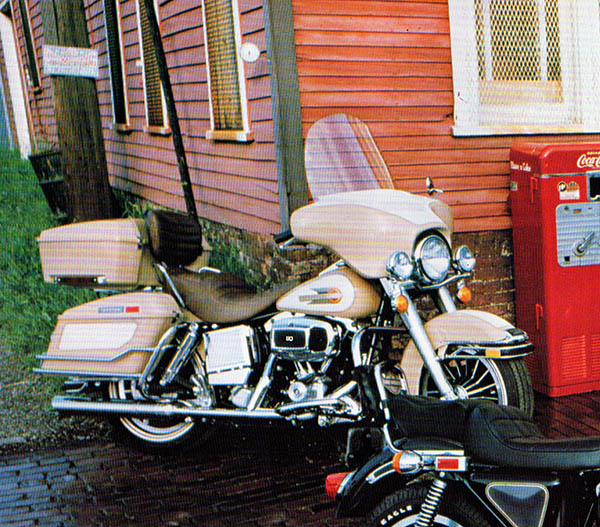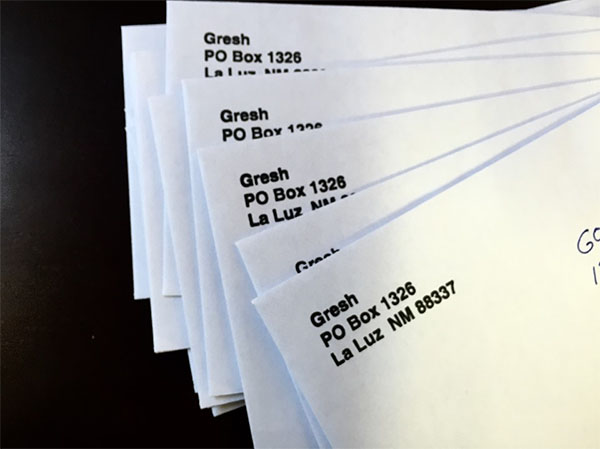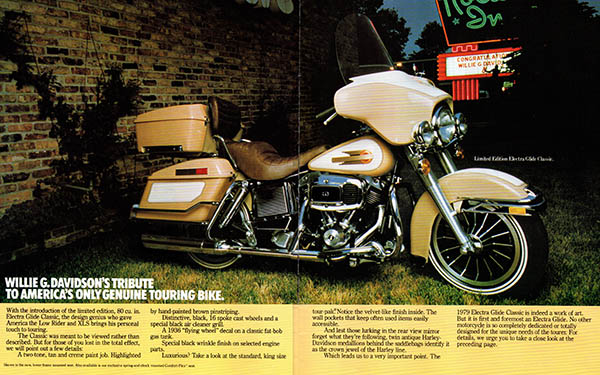The year was 1991, and the last thing in the world I was thinking about was buying another motorcycle, and within the confines of that thought, the very, very last thought I would have ever had was buying a Harley-Davidson. I had previously owned a ’79 Electra-Glide I bought new in Texas, and that bike was a beautiful disaster. I called it my optical illusion (it looked like a motorcycle). I wrote about the bad taste it left in an earlier blog. Nope, I’d never own another Harley, or so I thought when I sold it in 1981.

But like the title of that James Bond movie, you should never say never again. I was a big wheel at an aerospace company in 1991 and I was interviewing engineers when good buddy Dick Scott waltzed in as one of the applicants. I had worked with Dick in another aerospace company (in those days in the So Cal aerospace industry, everybody worked everywhere at one time or another). Dick had the job as soon as he I saw he was applying, but I went through the motions interviewing him and I learned he had a Harley. DIck said they were a lot better than they used to be and he gave me the keys to his ’89 Electra-Glide. I rode it and he was right. It felt solid and handled way better than my old Shovelhead.

That set me on a quest. I started looking, and after considering the current slate of Harleys in 1991, I decided that what I needed was a Heritage Softail. I liked the look and I thought I wanted the two-tone turquoise-and-white version. The problem, though, was that none of the Harley dealers had motorcycles. They were all sold before they arrived at the dealers, and the dealers were doing their gouging in those days with a “market adjustment” uptick ranging from $2000 to sometimes $4000 (today, most non-Harley dealers sort of do the same thing with freight and setup). There was no way in hell I was going to pay over list price, but even had I wanted to, it would have been a long wait to get a new Harley.
One day while driving to work, a guy passed me on the freeway riding a sapphire blue Heritage softail, and I was smitten. Those colors worked even better for me than did the turquoise-and-white color combo. The turquoise-and-white had a nice ‘50s nostalgia buzz (it reminded me of a ’55 Chevy Bel Air), but that sapphire blue number was slick. Even early in the morning on Interstate 10, I could see the orange and gray factory pinstriping, and man, it just worked for me. It had kind of a blue jeans look to it (you know, denim with orange stitching). That was my new want and I wanted the thing bad. But it didn’t make any difference. Nobody had any new Harleys, and nobody had them at list price. I might as well have wanted a date with Michelle Pfeiffer. In those days, a new Harley at list price or less in the colors I wanted (or in any colors, actually) was pure unobtanium.

So one Saturday morning about a month later, I took a drive out to the Harley dealer in San Bernardino. In those days, that dealer was Dale’s Modern Harley (an oxymoronic name for a Harley dealer if ever there was one). Dale’s is no more, but when it was there, it was the last of the real motorcycle shops. You know the drill…it was in a bad part of town, it was small, everything had grease and oil stains, and the only thing “modern” was the name on the sign. That’s what motorcycle dealers were like when I was growing up. I liked it that way, and truth be told, I miss it. Dealerships are too clean today.
Anyway, a surprise awaited. I walked in the front door (which was at the rear of the building because the door facing the street was chained shut because, you know, it was a bad part of town). And wow, there it was: A brand new 1992 Heritage Softail in sapphire blue. Just like I wanted.
Dale’s had a sales guy who came out of Central Casting for old Harley guys. His name was Bob (I never met Dale and I have no idea who he was). Bob. You know the type and if you’re old enough you know the look. Old, a beer belly, a dirty white t-shirt, jeans, engineer boots, a blue denim vest, and one of those boat captain hats motorcycle riders wore in the ‘40s and ‘50s. An unlit cigarette dangled from one corner of his mouth. His belt was a chromed motorcycle chain. I’d been to Dale’s several times before, and I’d never seen Bob attired in anything but what I just described. And I’d never seen him without that unlit cigarette. Straight out of Central Casting, like I said.
“What’s this?” I asked Bob, pointing at the blue Softail.
“Deal fell through,” Bob answered. “Guy ordered it, we couldn’t get him financing, and he couldn’t get a loan anywhere else.”
“So it’s available?” I asked.
“Yep.”
Hmmm. This was interesting.
“How much?” I asked.
“$12,995, plus tax and doc fees,” Bob answered, walking back to his desk at the edge of Dale’s very small showroom floor.
$12,995 was MSRP for a new Heritage Softail back in 1992. That would be a hell of a deal. Nobody else in So Cal was selling Harleys at list price.
I followed Bob to his desk and sat down. I was facing Bob and the Harley was behind me. Bob was screwing around with some papers on his desk and not paying any particular attention to me.
“I’ll go $11,500 for it,” I said.
Bob looked up from his paperwork and smiled.
“Son,” he said (and yeah, he actually called me “son,” even though I was 40 years old at the time) “I’m going to sell that motorsickle this morning. Not this afternoon, not next week, but this morning. The only question is: Am I going to sell it to you or am I going to sell it to him?”
Bob actually said “motorsickle,” I thought, and then I wondered who “him” was. Bob sensed my befuddlement. He pointed behind me and I looked. Somebody was already sitting on what I had started regarding as my motorsickle. That guy was thinking the same thing I was.
“Bob,” I began, “you gotta help me out here. I never paid retail for anything in my life.”
“That’s because you never bought a new ’92 Harley, son, but I’ll tell you what. I’ll throw in a free Harley T-shirt.” I couldn’t tell if he was joking or if he was trying to insult me, but I didn’t care.
I looked at the Harley again and that other dude was still sitting on it. On my motorcycle. And that’s when I made up my mind. $12,995 later (plus another thousand dollars in taxes and doc fees) I rolled out of Dale’s with a brand-new sapphire blue Harley Heritage Softail. And one new Harley T-shirt.

 My favorite Monkee episode (because of the motorcycles) opens with Micky Dolenz singing Going Down. Micky was the drummer and the best singer in the band and he nails Going Down’s proto-rap feel. From there, the show falls apart beautifully with motorcycles, a chalkboard Hog reference, dust and pretty girls beating up The Monkees.
My favorite Monkee episode (because of the motorcycles) opens with Micky Dolenz singing Going Down. Micky was the drummer and the best singer in the band and he nails Going Down’s proto-rap feel. From there, the show falls apart beautifully with motorcycles, a chalkboard Hog reference, dust and pretty girls beating up The Monkees. The monkees form their own biker gang called The Chickens and during a race between the bad guys more cinema magic is revealed. There is a plot to all this but it’s mostly there to keep the boys from walking off the set. At the end of the show peace and love is restored, Triumphs and Harleys get along together and you’re filled with hope for the future.
The monkees form their own biker gang called The Chickens and during a race between the bad guys more cinema magic is revealed. There is a plot to all this but it’s mostly there to keep the boys from walking off the set. At the end of the show peace and love is restored, Triumphs and Harleys get along together and you’re filled with hope for the future. This was situation comedy television unlike any that came before. It was random. It exposed the fakery. Jack Benny’s old TV show was The Monkees spirit guide. After 2 years the Monkees show was cancelled. The Monkees became a real band and had many hits written and preformed by themselves. Which just goes to show you that living a lie sometimes leads to success.
This was situation comedy television unlike any that came before. It was random. It exposed the fakery. Jack Benny’s old TV show was The Monkees spirit guide. After 2 years the Monkees show was cancelled. The Monkees became a real band and had many hits written and preformed by themselves. Which just goes to show you that living a lie sometimes leads to success. Terry is the former Thunder Press editor, and there’s lots of cool V-Twin stuff on
Terry is the former Thunder Press editor, and there’s lots of cool V-Twin stuff on 
 We sent an email requesting your address if you signed up, so watch for it and shoot that info back to us. We promise that as soon as we get your snail mail address and confirmed that you’re on our email list, we’ll shoot them out to you as soon as we get around to it. Want to help us more? Hey, share our site and get more folks to sign up for our automatic emails, or just get them to visit
We sent an email requesting your address if you signed up, so watch for it and shoot that info back to us. We promise that as soon as we get your snail mail address and confirmed that you’re on our email list, we’ll shoot them out to you as soon as we get around to it. Want to help us more? Hey, share our site and get more folks to sign up for our automatic emails, or just get them to visit  Hey, we saw a Chinese manufacturer making parts for Harley a decade ago. But the recent news is this is going to be a complete small bike, just over 300cc. I’m surprised Harley didn’t do this several years ago, but then, Gresh and I were in the catbird’s seat on the small bike thing from the gitgo.
Hey, we saw a Chinese manufacturer making parts for Harley a decade ago. But the recent news is this is going to be a complete small bike, just over 300cc. I’m surprised Harley didn’t do this several years ago, but then, Gresh and I were in the catbird’s seat on the small bike thing from the gitgo. 
 Glenn sent me a few photos from the old days and one that got my attention was a shot of us building a Sportster in the living room of the shack we used to live in. Having a living room to work in was a luxury because prior to renting the shack I was homeless. I had an old Chevy truck with a bench seat that I could stretch out enough to get some sleep and I had a job that let me take a dry bath in the restroom after work. But when Admiralty Marine closed its doors for the evening I was on my own until the next morning. The boss let me know that the situation couldn’t go on forever and that I really needed to find a place to live.
Glenn sent me a few photos from the old days and one that got my attention was a shot of us building a Sportster in the living room of the shack we used to live in. Having a living room to work in was a luxury because prior to renting the shack I was homeless. I had an old Chevy truck with a bench seat that I could stretch out enough to get some sleep and I had a job that let me take a dry bath in the restroom after work. But when Admiralty Marine closed its doors for the evening I was on my own until the next morning. The boss let me know that the situation couldn’t go on forever and that I really needed to find a place to live. The Sportster’s high dome pistons were ok so a quick hone job and a set of rings finished off the top end. After that you’d think I’d leave the engine alone but I had to have a tin primary cover like the XR750 flat trackers ran.
The Sportster’s high dome pistons were ok so a quick hone job and a set of rings finished off the top end. After that you’d think I’d leave the engine alone but I had to have a tin primary cover like the XR750 flat trackers ran. In San Diego I lived across the street from a Safeway food market. Man, I never ran out of anything. That Safeway is now a West Marine boat supply store. They got nothing to eat in the whole damn place. But back then, around 1980, it was a great food source.
In San Diego I lived across the street from a Safeway food market. Man, I never ran out of anything. That Safeway is now a West Marine boat supply store. They got nothing to eat in the whole damn place. But back then, around 1980, it was a great food source.




 I guess more financial mags are zeroing in on Harley-Davidson’s plans to introduce an electric motorcycle. You saw our post a week or so ago about The Motley Fool and their thoughts on the Livewire. Barron’s, another financial newspaper/advisory service, similarly reported on Harley’s woes but with a twist.
I guess more financial mags are zeroing in on Harley-Davidson’s plans to introduce an electric motorcycle. You saw our post a week or so ago about The Motley Fool and their thoughts on the Livewire. Barron’s, another financial newspaper/advisory service, similarly reported on Harley’s woes but with a twist.  The Motley Fool is an investment advisory service newsletter I’ve been following since the 1990s, and my take on things is they generally have good advice and make predictions that have proven to be sound. Most recently, The Motley Fool published an article (
The Motley Fool is an investment advisory service newsletter I’ve been following since the 1990s, and my take on things is they generally have good advice and make predictions that have proven to be sound. Most recently, The Motley Fool published an article (





